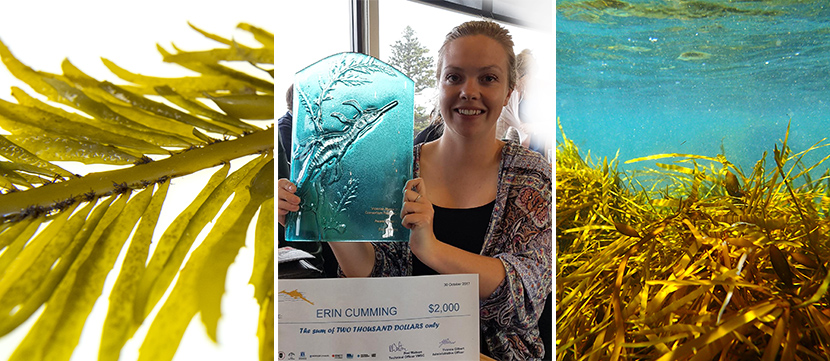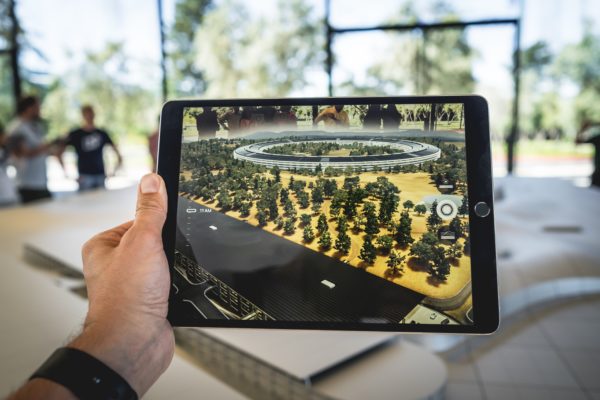A Deakin PhD student is working with industry to investigate whether commercial aquaculture of seaweed in Port Phillip Bay is possible.
A third generation sheep and cattle grazier from Gippsland has turned her sights to a different type of farming, working with the Victorian Shellfish Hatchery in Queenscliff, along with the Victorian Fisheries Authority and Kai Ho Tasmanian Sea Vegetables, to cultivate commercial quantities of seaweed in waters off the Morning Peninsula.
Seaweed is attracting the interest of researchers worldwide because of the potential it holds for a range of applications, from human and animal food to helping clean up ocean pollution. In countries like South Korea and Japan, where cultivating seaweed for food has been going on for thousands of years, seaweed farms are part of a ten billion dollar a year global industry. Seaweed cultivation is also increasing in European and Scandinavian countries and a recent episode of “Catalyst” on ABC TV, “Can seaweed save the world?”, highlighted the fledgling Australian industry.
PhD candidate Erin Cumming is one of a number of researchers at Deakin University exploring what Victoria’s diverse and unique species of seaweed could offer as a sustainable source of food, fibre and fertiliser.
Ms Cumming, who is investigating the feasibility of integrating sustainable seaweed culture into an existing Victorian Shellfish Hatchery mussel aquaculture system, recently “planted” her first trial crop of seaweed in Port Phillip Bay near Mount Martha.
She said her research involved investigating whether seaweed could be cultivated in an integrated multi-trophic aquaculture system, which allows multiple species to grow together (such as mussels and seaweed), with waste from one species providing nutrients for another.
She has also been experimenting with which Australian seaweed species might be most suitable for cultivation.
“Australian seaweed species are extremely unique and many of the kelp species that are grown through aquaculture in other parts of the world don’t naturally occur here. Much of my work is figuring out which of our native species would be suitable for culture, and whether it’s possible to cultivate them from spawning through to harvest,” Ms Cumming said.
It will be around 18 months before Ms Cumming knows if the trial planting was successful.
“I think that will be when we see adult sized plants. How quickly seaweed grows depends on the species, the available nutrients, light and water motion, so there are a range of things we have to consider,” she said
[testimonial_text]It’s potentially harder than farming on land, but at the same time we’re not relying on fresh water for the crop and that’s a big advantage, especially as our water reserves dwindle.[/testimonial_text]
[testimonial_picture name=”Ms Erin Cumming” details=”Deakin University PhD Candidate”]
 [/testimonial_picture]
[/testimonial_picture]The trial crop is “Phyllospora comosa” or “crayweed,” a species of brown seaweed endemic to Australia and New Zealand. Ms Cumming is also part of a team lead by Dr Alecia Bellgrove from the School of Life and Environmental Sciences and Dr Ben Allardyce from Deakin’s Institute for Frontier Materials (IFM), who are working together to turn alginate (a polysaccharide found in the cell walls of brown seaweeds) extracted from crayweed and other Australian seaweeds into spun fibres for medical application. The team is also developing innovative natural fibres for seaweed cultivation purposes.
“In seaweed culture, once you spawn the little seaweed embryos you have to seed them onto something they can grow on out in the water,” Ms Cumming explained.
“At the moment, I’m testing different types of twines to set them on to, to see what they grow best on. Most of these twines are plastic-based, but this potentially contributes to plastic pollution in the ocean. Working with IFM, we’re hoping we can develop biodegradable natural fibre twines that are cost effective for use in seaweed settlement and ocean culture in the future, so we can be part of the plastic solution rather than part of the problem.”
Ms Cumming, who was recently awarded the Victorian Marine Science Consortium Post Grad of the Year Award, said the seaweed farming project had allowed her to combine her interest in sustainable primary industry development with her passion for marine biology, and she is keen for the seaweed culture industry to not repeat farming mistakes of the past.
“Seaweed has such amazing potential for so many things, which means cultivating it for our use is important to avoid putting pressure on wild stock,” she said.
“We must keep in mind both the positive and negative impacts that aquaculture can have on the marine environment and work towards creating a sustainable industry that will be future proofed for climate change”.
Published by Deakin Research on 29 November 2017




